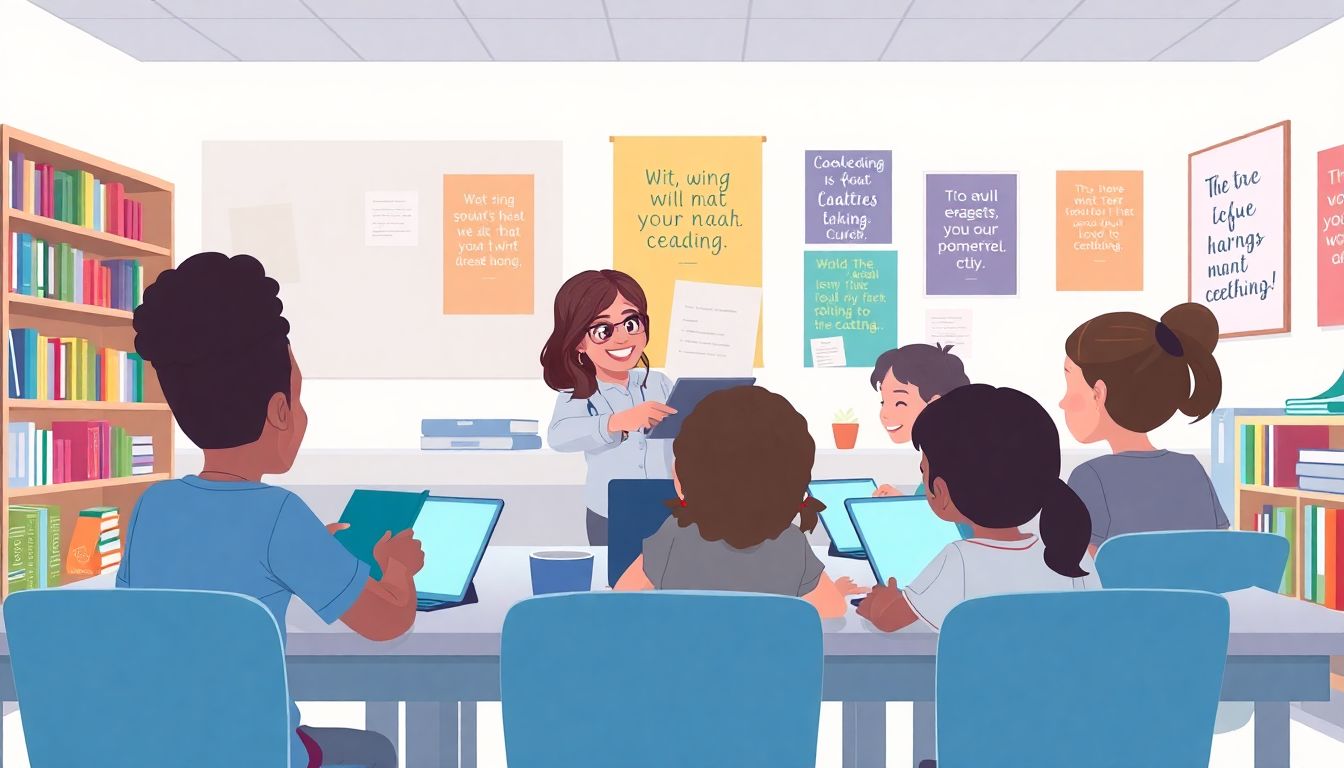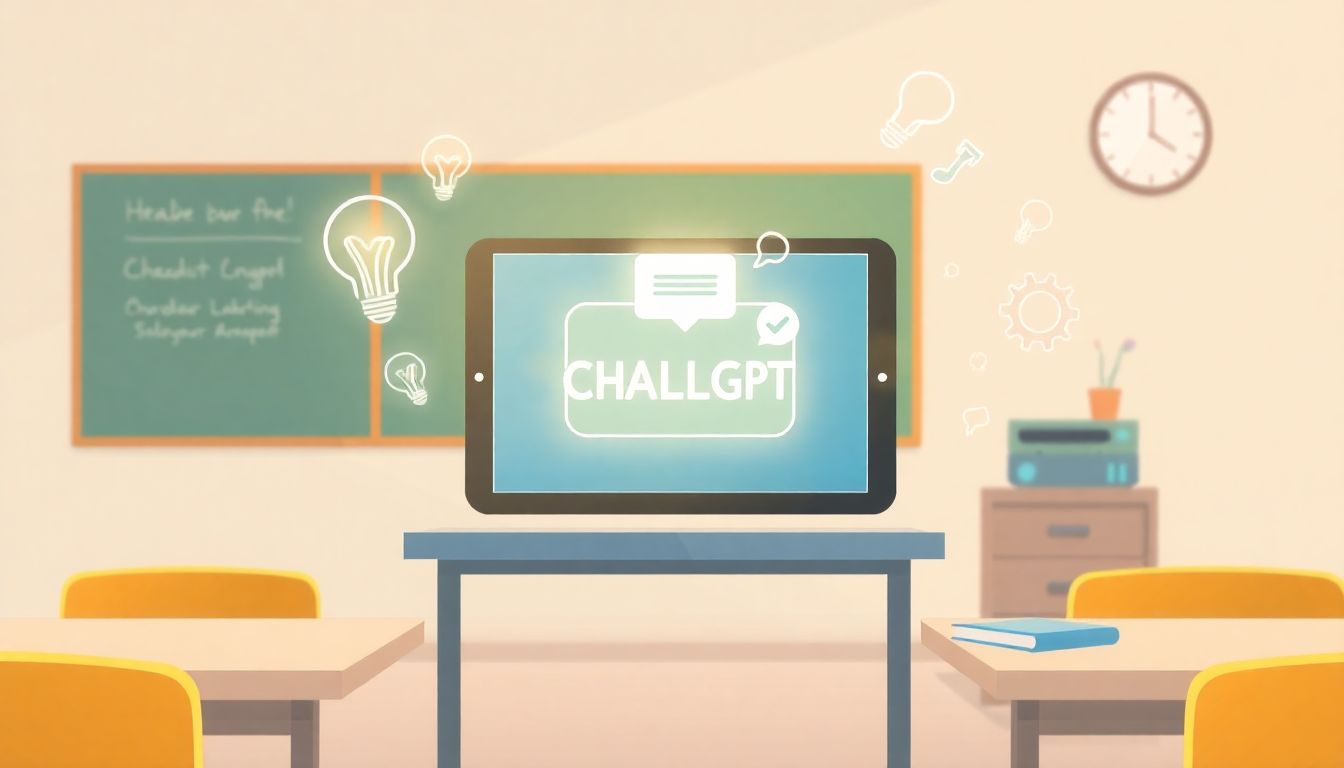It’s no secret that teaching can be a tough job, especially when trying to engage every student and cater to their unique learning needs. Many teachers are seeking innovative tools to enhance their lessons and make learning more interactive and enjoyable. If you’ve ever felt overwhelmed by these challenges, you’re definitely not alone!
Here’s the good news: ChatGPT might just be the game-changer you’ve been looking for. Stick around, and you’ll discover how this AI tool can boost student engagement, create personalized learning experiences, and even lend a hand in lesson planning.
From crafting quizzes to supporting collaborative projects, the applications of ChatGPT in the classroom are practically endless. Let’s dive into how you can harness its power for a more dynamic educational experience!
Key Takeaways
- ChatGPT can enhance classroom engagement by offering instant feedback and personalized interactions, making learning more dynamic.
- It supports personalized learning by adapting content to individual student needs, helping educators create customized study plans.
- Teachers can quickly generate quizzes and study guides, streamlining assessments and empowering students to learn independently.
- ChatGPT improves writing skills by providing immediate feedback and generating writing prompts, fostering a creative and supportive environment.
- It facilitates collaborative projects by assisting in brainstorming, organizing tasks, and promoting effective communication among group members.
- Educators can use ChatGPT for efficient lesson planning and resource curation, saving time and enhancing instructional strategies.
- It helps address individual learning challenges by providing tailored support, fostering an inclusive classroom environment.

How ChatGPT Can Be Used in the Classroom
ChatGPT has various educational applications that can significantly enhance the classroom experience for both teachers and students.
One of its standout features is its ability to provide instant feedback and generate personalized responses, making it a versatile tool in the realm of education.
Teachers can integrate ChatGPT seamlessly with classroom technology, automating administrative tasks like grading or answering frequently asked questions.
This not only saves time but also allows teachers to focus more on engaging students and providing quality instruction.
Additionally, ChatGPT acts as a supportive resource for students, offering help with homework or clarifying complex topics.
For more on how to enhance educational outcomes with AI, check out our article on ChatGPT in Education.
Enhancing Student Engagement with ChatGPT
One effective way to enhance student engagement is through interactive learning experiences facilitated by ChatGPT.
For instance, students can ask questions in real-time, generating an immediate and personalized response that can help maintain their interest.
Additionally, educators can use ChatGPT to create quizzes that challenge students, effectively turning learning into a game.
By incorporating AI-driven engagement techniques, teachers can tailor interactions to be more personal, motivating students to participate actively.
Some practical prompts for teachers might include:
- “Generate an interactive quiz based on the chapter I’m teaching: [Chapter Title].”
- “Create a discussion topic for my class about [Subject].”
- “Summarize the key points of [Topic] in a way that will engage middle school students.”
Encouraging students to use ChatGPT for brainstorming can also boost classroom participation by allowing them to explore ideas in a low-pressure environment.
Using ChatGPT for Personalized Learning
Personalized learning is increasingly important, and ChatGPT excels in this arena by adapting educational content to individual student needs.
Teachers can customize learning paths using ChatGPT to align with different learning styles, whether a student prefers visual aids or textual explanations.
This adaptive learning approach is essential for keeping students motivated and enhancing their comprehension of material.
For practical use, educators can issue prompts like:
- “Help me design a customized study plan for a student struggling with [Subject].”
- “Suggest personalized learning resources for a student who learns best through visual content.”
- “Create a set of practice questions tailored to different learning styles for [Topic].”
By utilizing ChatGPT, teachers can facilitate a student-centric learning environment where each individual receives the support they need.
Creating Quizzes and Study Guides with ChatGPT
ChatGPT can be a fantastic tool for creating quizzes and study guides, making the assessment process more efficient and engaging.
Automated quiz generation allows educators to quickly develop assessments tailored to their lesson plans, focusing on essential learning outcomes.
Moreover, students can benefit from personalized study aids generated by ChatGPT, which can cater to their strengths and weaknesses.
To get started, teachers can use prompts like:
- “Generate a quiz with 10 questions on [Subject] covering these key topics: [List of Topics].”
- “Create a study guide for [Topic], including key terms and definitions.”
- “Provide a list of practice test questions and answers for [Exam Type].”
This not only saves valuable time but also empowers students to take charge of their learning, studying at their own pace with resources designed just for them.

Improving Writing Skills Through ChatGPT Prompts
ChatGPT can significantly improve writing skills by providing personalized, immediate feedback and generating tailored prompts.
Students can benefit from exploration in different writing styles, genres, and techniques without the fear of judgment.
For example, ChatGPT can generate creative writing prompts to inspire storytelling or academic writing tasks.
To get started, use these practical prompts:
- “Provide a creative writing prompt based on the theme of friendship for high school students.”
- “Suggest five different ways to start an essay about climate change.”
- “Generate a list of ten interesting vocabulary words and provide sentences using each for context.”
Additionally, students can request feedback on their writing skills, which can help refine their grammar, structure, and style.
Prompts for feedback might include:
- “Evaluate the grammar and structure of my essay on [Topic] and suggest improvements.”
- “Provide tips on how to make my writing more engaging for a younger audience.”
- “What common mistakes should I avoid when writing a research paper on [Subject]?”
Incorporating ChatGPT into writing tasks not only aids skill development but also makes the writing process a more interactive and enjoyable experience for students.
Facilitating Collaborative Projects Using ChatGPT
Collaboration among students can be significantly enhanced with ChatGPT, providing a virtual teammate for brainstorming and organizing group efforts.
Whether working on a presentation or a research project, ChatGPT can assist in generating ideas, structuring tasks, and facilitating communication.
Use these prompts to streamline group projects:
- “Help my group brainstorm ideas for a project on [Topic] and suggest a potential outline.”
- “Generate roles for each team member based on their strengths for our project on [Project Subject].”
- “Create a timeline for completing our group project, including major milestones and deadlines.”
Encourage students to use ChatGPT to mediate discussions or resolve conflicts by asking questions that promote open communication.
For instance, prompts for conflict resolution could include:
- “Suggest ways to address differing opinions among group members on [Issue].”
- “How can we ensure everyone feels included in our group discussions about [Topic]?”
- “Provide tips for effective collaboration in a virtual setting for our team project.”
With ChatGPT as a collaborative tool, students can experience a smoother, more organized approach to group work, boosting their learning outcomes and teamwork skills.
Supporting Teachers with Lesson Planning and Resources
Teachers can turn to ChatGPT for support in crafting lesson plans and curating educational resources efficiently.
This AI tool can suggest engaging activities, provide content summaries, and even generate full lesson outlines tailored to specific student needs.
Consider using these prompts for lesson planning:
- “Create a comprehensive lesson plan for a unit on [Subject] aimed at [Grade Level].”
- “Suggest activities that promote engagement for an online class about [Topic].”
- “Provide a list of resources (articles, videos, and websites) for teaching [Concept].”
Additionally, ChatGPT can assist teachers in designing assessment rubrics to better evaluate student performance.
Prompts for rubric creation could include:
- “Generate a rubric for evaluating presentations on [Subject].”
- “What criteria should I include in a grading rubric for a creative writing assignment?”
- “Create a checklist of elements for assessing group projects in my class.”
By leveraging ChatGPT in lesson planning, teachers can save time and enhance their instructional strategies, leading to more effective and engaging classroom experiences.
Addressing Individual Learning Needs and Challenges
ChatGPT plays a crucial role in addressing the diverse learning needs of students, providing tailored support for those facing challenges.
For educators, this means crafting individualized education plans and intervention strategies using AI-driven insights.
To begin, use prompts focused on student needs:
- “Suggest strategies for supporting a student with dyslexia in reading comprehension.”
- “How can I adapt lesson materials for students with different learning abilities in my classroom?”
- “Create an individualized learning plan for a student who struggles with math concepts.”
Students can also utilize ChatGPT to ask questions or clarify uncertainties, receiving explanations that cater specifically to their understanding level.
Prompts for student use might include:
- “Explain the concept of [Topic] in simple terms as if I was a third grader.”
- “Generate examples of [Concept] that would help me understand it better.”
- “Provide study tips for mastering [Subject] that focus on my learning style.”
By incorporating ChatGPT into personalized learning approaches, educators can provide immediate support and foster an inclusive classroom that recognizes and meets individual student challenges.

Encouraging Critical Thinking and Problem Solving with ChatGPT
Encouraging critical thinking and problem-solving skills is vital in education, and ChatGPT can be an excellent tool for this.
Using AI, students can tackle complex problems by asking questions and getting insightful answers that promote deep thinking.
ChatGPT can generate hypothetical scenarios that challenge students to think critically and devise solutions.
Here are some useful prompts for students and teachers:
- “Create a problem-solving scenario involving [Specific Topic] that requires analytical thinking.”
- “List the pros and cons of [Issue] to help students debate effectively.”
- “Generate a series of questions that encourage critical analysis of [Article or Study].”
Additionally, educators can use ChatGPT to create thought-provoking discussions in the classroom.
For instance, prompts like these can initiate engaging debates:
- “What are the ethical implications of [Topic]? Discuss with your classmates.”
- “Formulate arguments for and against [Controversial Topic] to enhance critical discussions.”
- “Develop a unique perspective on [Issue] and present it to the class.”
By leveraging ChatGPT, teachers can help foster a learning environment where students are encouraged to think critically and solve problems creatively.
Integrating ChatGPT into Remote Learning Environments
With more education occurring online, integrating ChatGPT into remote learning environments can enhance the educational experience significantly.
This AI tool supports live interactions, responding to student queries instantly and providing assistance as needed.
For effective remote learning, here are some prompts to integrate ChatGPT:
- “Create a virtual classroom agenda for the week, including key topics and activities.”
- “Suggest interactive activities for an online lesson about [Subject].”
- “Provide tips for staying motivated during remote learning sessions.”
Additionally, ChatGPT can facilitate group discussions in online settings by generating thought-provoking questions.
Prompts like the following can encourage collaboration and engagement:
- “Generate a question related to [Topic] that can spark a class discussion.”
- “What are some strategies to engage students during a virtual lesson on [Topic]?”
- “List recommended tools for effective online collaboration for students.”
By utilizing ChatGPT in remote learning, educators can create a more interactive and supportive environment, which ultimately helps students thrive despite physical distances.
Future Trends: The Role of AI in Education
The future of AI in education promises exciting advancements, with ChatGPT at the forefront of transformative learning experiences.
As AI technology evolves, we can expect enhanced personalization, allowing for tailored educational materials for each student’s unique needs.
ChatGPT will continue to provide insights and assessments, helping teachers adapt their teaching methods efficiently.
To stay ahead of these trends, educators can consider the following prompts:
- “List emerging technologies that will shape the future of education in the next decade.”
- “How can we prepare students for a workforce increasingly integrated with AI technologies?”
- “Generate a roadmap for integrating AI tools into the curriculum over the next year.”
Moreover, fostering a culture of innovation will be crucial for leveraging AI effectively in the classroom.
Encourage educators and students to think critically about the use of AI, ethical considerations, and its potential impact on the learning landscape.
By embracing AI technologies like ChatGPT, educational institutions can evolve and create learning experiences that cater to the demands of an ever-changing world.
FAQs
ChatGPT can enhance student engagement by providing interactive learning experiences. It offers instant feedback, personalized responses, and encourages creative thinking, making lessons more dynamic and interesting for students.
Teachers can use ChatGPT to tailor lessons to individual students’ needs. By analyzing student performance, it can provide custom content and practice exercises, helping to address learning gaps effectively.
Yes, ChatGPT can assist in generating quizzes and study guides by creating relevant questions based on the material being studied. This saves time for teachers while ensuring content accuracy and relevance.
ChatGPT can facilitate collaborative projects by providing a platform where students can brainstorm, share ideas, and receive feedback on their contributions. It enhances teamwork and helps maintain project coherence.
